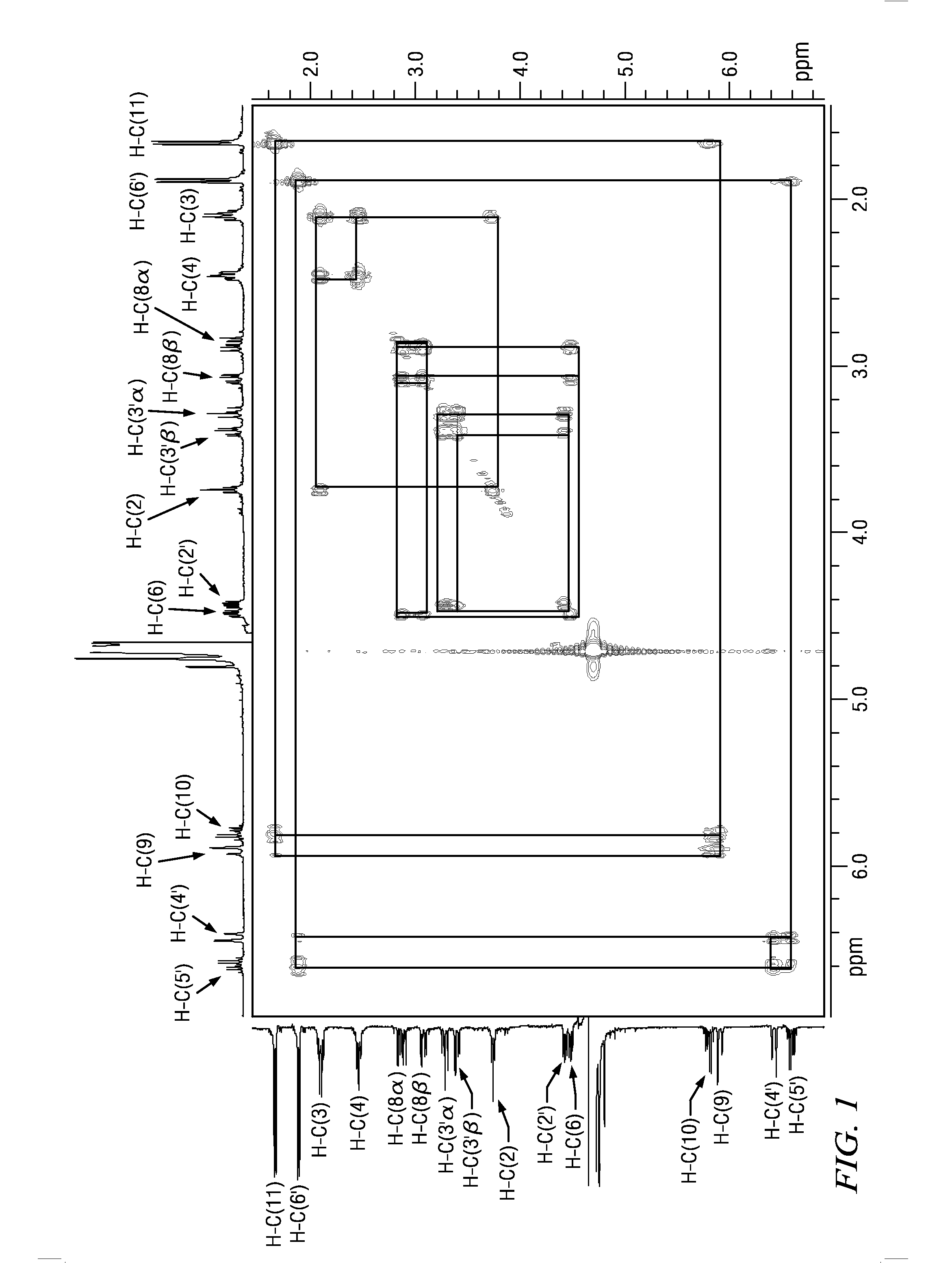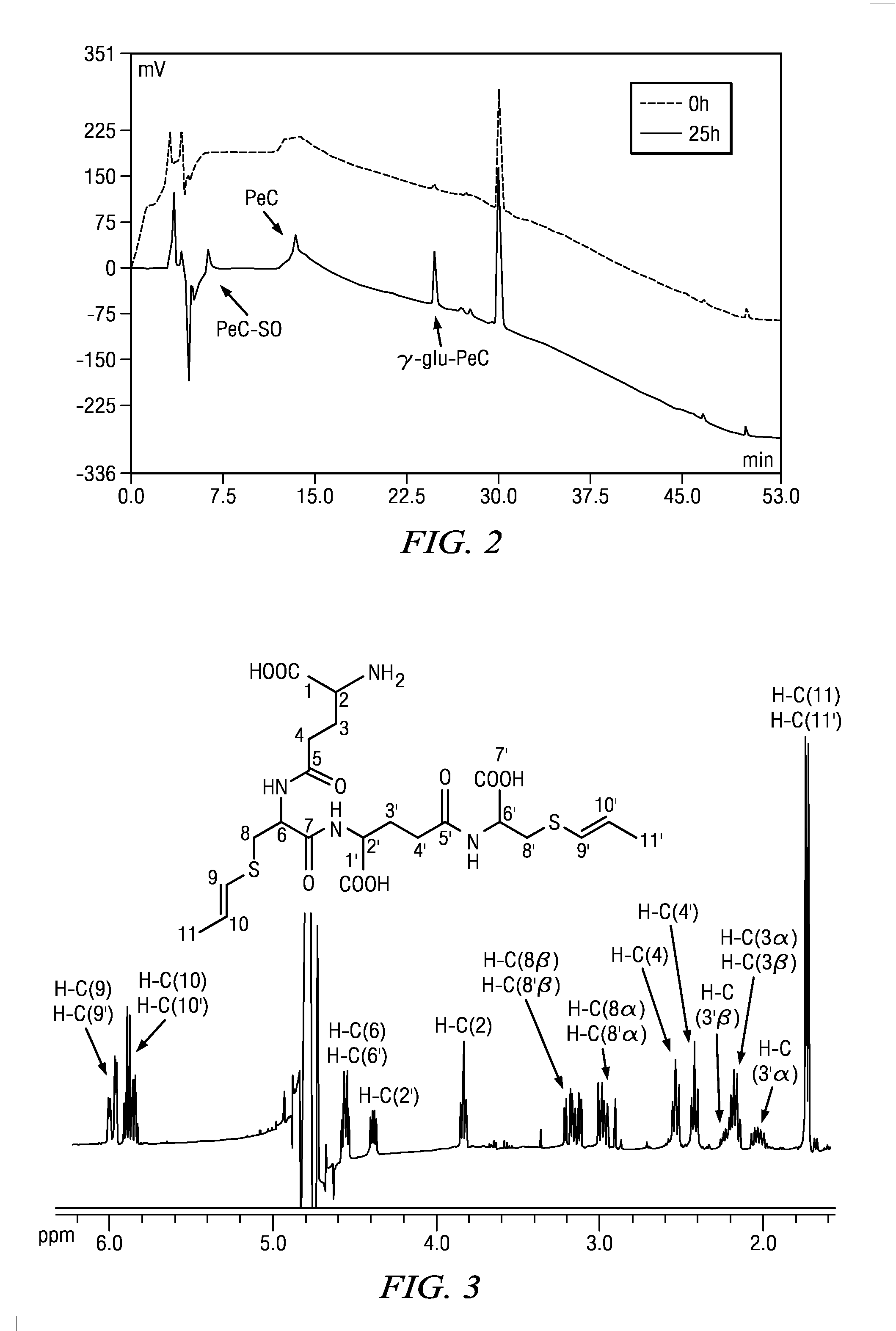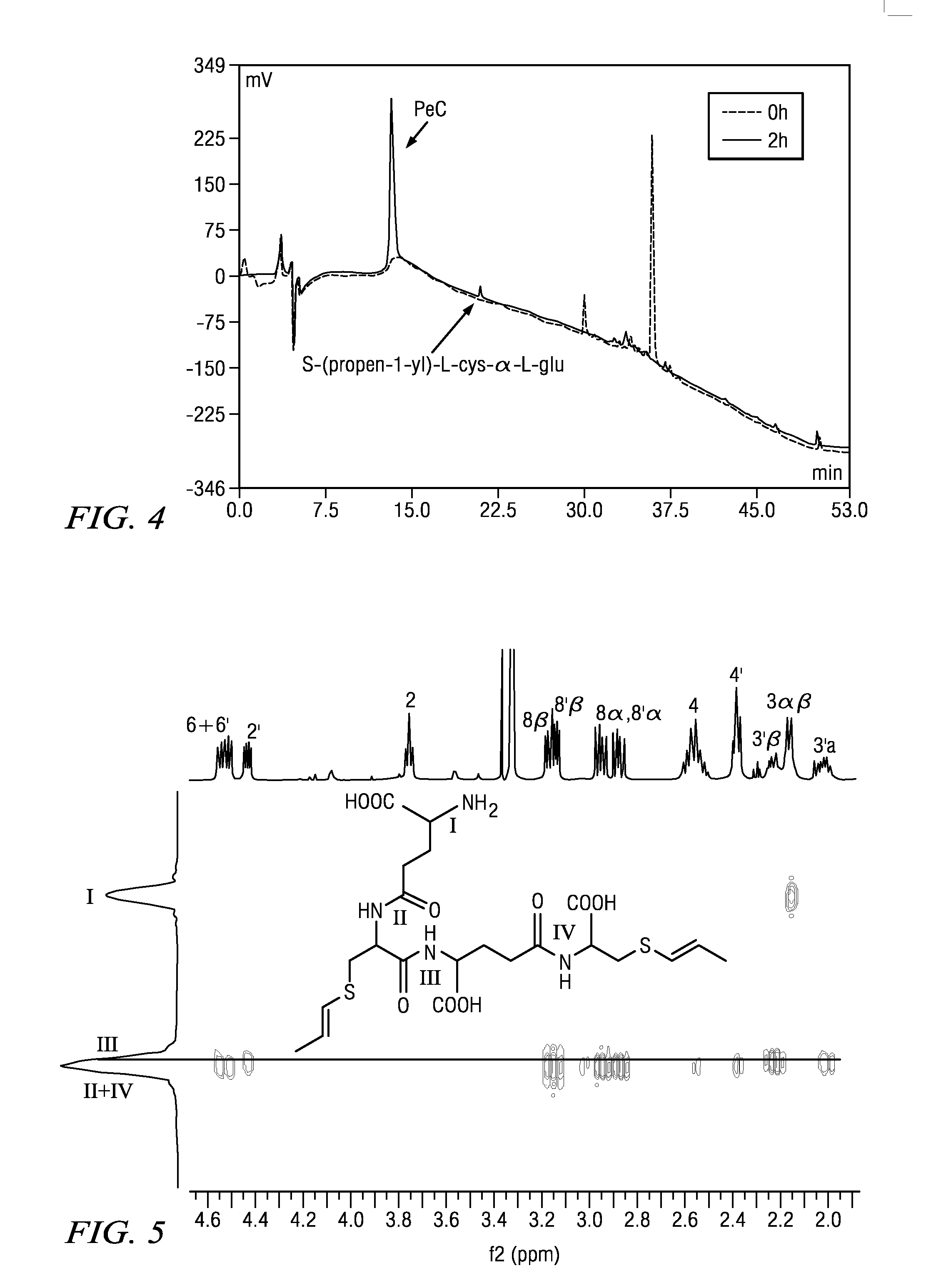Natural Flavour Enhancers and Methods for Making Same
a technology of enhancers and flavours, applied in the field of extracting flavour enhancers, can solve the problems of not fully satisfying the neutral taste of flavour enhancers and not being very poten
- Summary
- Abstract
- Description
- Claims
- Application Information
AI Technical Summary
Benefits of technology
Problems solved by technology
Method used
Image
Examples
example syntheses
and Analysis of Amadori Reaction Products: N-(1-Deoxy-D-fructos-1-yl)-S-allyl-L-cysteine and N-(1-Deoxy-D-fructos-1-yl)-γ-L-glutamyl-(E)-S-1-propenyl-L-cysteine
[0073]S-allyl-cysteine (3.1 mmol) and D-glucose (6.2 mmol) were suspended in a mixture of methanol and isopropanol (3 / 1, v / v, 300 mL). The suspensions were refluxed for about 10 hours at 100° C. while stirring. Similarly, γ-L-glutamyl-(E)-S-1-propenyl-L-cysteine (1.7 mmol) and D-glucose (16.6 mmol) were suspended in a mixture of methanol and isopropanol (3 / 1, v / v, 300 mL), and the suspensions were refluxed for 10 h at 100° C. while stirring. The 13C labelled Amadori reaction products were obtained in a similar manner. After cooling the reaction mixture to ambient temperature, the volume was reduced to dryness under vacuum. After purification by means of RP-18 column chromatography, and lyophilisation, the target compounds were obtained as white powders in purities of more than 98%. A Thermo Hypersil C-18 column was used (250...
example 1
Sensory Effects of the Compounds in Chicken Broth
[0084]Sensory (triangle) tests are performed by dilution of 3 grams of chicken broth concentrate (Gourmet Bouillon Huhn; Maggi, Singen, Germany) with 100 mL water (Evian®). Additives are added as specified in table below. The pH-value of all samples is adjusted to 6.5 using formic acid (0.1 mol / L) or sodium hydroxide (0.1 mol / L). Glutathione (GSH) was determined to have a kokumi intensity of 3.5 in all tests. The results of the tests are indicated in Table 10, below. For each sample, kokumi intensity is rated and panelists were asked to describe sensory characteristics.
TABLE 10Sensory effects in chicken brothKokumiConcentrationintensityChicken broth samplesof additive(0-5)Sensory descriptorsNegative control (without—2—additives)Positive control: NaCl30 mmol / L2increased salty tastePositive control: MSG (mono10 mmol / L2increased umamisodium glutamate)GSH, reduced form [γ-Glu-Cys-10 mmol / L3.5increased complexity andGly]mouthfulness, more ...
example 2
Sensory Effects of the Compounds in Water
[0085]Sensory (triangle) tests are performed by dissolving the listed compounds in water (Evian®). Additives are added as specified in table below. The pH-value of all samples is adjusted to 6.5 using formic acid (0.1 mol / L) or sodium hydroxide (0.1 mol / L). The results of the tests are indicated in Table 11, below. For each sample, aroma and taste intensity is rated and panelists are asked to describe sensory characteristics.
TABLE 11Sensory effects in waterConcentrationIntensityCompoundof additive(0-5)Sensory descriptorsS-methyl-L-cysteine10 mmol / L0flavourlessS-ethyl-L-cysteine10 mmol / L1mouth coating, tonguecovering, onion aromaS-propyl-L-cysteine10 mmol / L2mouth coating, tonguecovering, onion aroma(Z)-S-1-propenyl-L-cysteine10 mmol / L1tongue covering, garlic andS-(E-prop-1-enyl)-cysteineonion aroma[(E)-S-1-propenyl-cysteine]S-allyl-L-cysteine10 mmol / L1mouth covering, stronggarlic aroma 3(E)-S-1-propenyl-L-cysteine10 mmol / L1fresh onion aromaS-(...
PUM
| Property | Measurement | Unit |
|---|---|---|
| particle size | aaaaa | aaaaa |
| particle size | aaaaa | aaaaa |
| wavelength | aaaaa | aaaaa |
Abstract
Description
Claims
Application Information
 Login to View More
Login to View More - R&D
- Intellectual Property
- Life Sciences
- Materials
- Tech Scout
- Unparalleled Data Quality
- Higher Quality Content
- 60% Fewer Hallucinations
Browse by: Latest US Patents, China's latest patents, Technical Efficacy Thesaurus, Application Domain, Technology Topic, Popular Technical Reports.
© 2025 PatSnap. All rights reserved.Legal|Privacy policy|Modern Slavery Act Transparency Statement|Sitemap|About US| Contact US: help@patsnap.com



